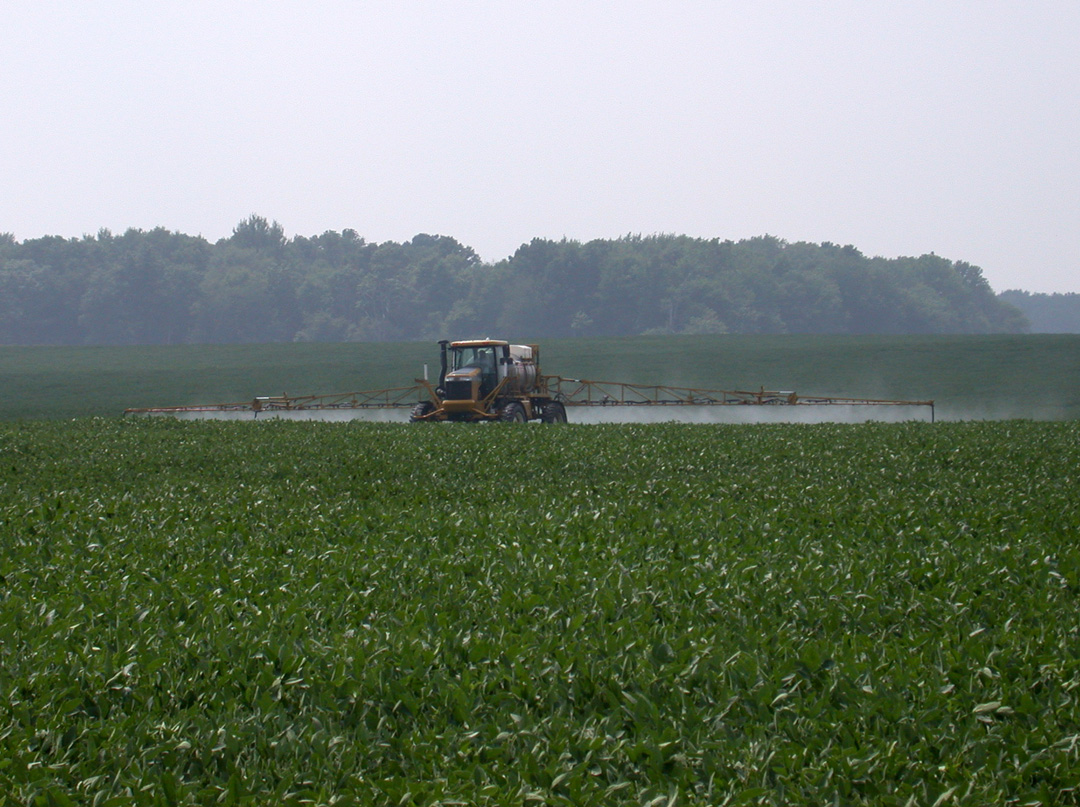Like many of my co-workers across the Corn Belt, I spent a great deal of time this winter talking to growers about dicamba. Dicamba has been with us since the 1960s, but has been given a new life thanks to plant scientists who have bred dicamba tolerant soybeans, a herbicide that in the past has been known to knock the leaves right off the plants.

Soybean spraying.
The main focus of these talks was how to use this product in a manner that can reduce potential for drift and volatilization to non-targeted plants. The manufactures and regulatory agencies have laid out specific rules that users must follow. The rules, which included a combination of dicamba-specific training and in-field methods, are being implemented to reduce issues. The trainings are done, the rules are in place. Over the next few months, we will see what the results are.
My hope is that dicamba users take this seriously. We need this product in our toolbox for some of the herbicide resistant weeds that have popped up the past few years. If we have too many issues, the product will be taken away.
It is unrealistic to believe there will not be some problems. Dicamba has properties that can lead to drift even when the applicator follows all the rules. The regulatory agencies understand that. What they do not want to see are situations when applicators blatantly ignore the rules on the label.
For instance, after one of our training sessions this winter, I was approached by a man whose neighbor had used an older version of dicamba on his dicamba-tolerant beans last summer. This version of dicamba, while less expensive, is much more volatile than the new version. Predictably, it drifted off target, knocking the leaves off numerous non-tolerant soybean fields in the neighborhood.
It is precisely this type of behavior that will cause us to lose this product. In some states, this type of illegal application caused problems so wide spread, it pitted farmer against farmer, and in one case, a farmer was murdered during a heated argument! Not only that, when dicamba hits that many acres of off-target soybeans, you can bet there were many other non-target plants in fields, greenhouses and backyards that got whacked by this fellow’s illegal application. It becomes a public relations nightmare for farmers in general, not just the offending applicator.
It is my hope we have a good summer, especially when it comes to dicamba applications. A bullet list for success includes:
• Apply the product in a timely fashion: when weeds are 4 inches or less in height.
• Wind speed and direction will be checked at boom height before each application.
• Applications will be avoided when the wind is blowing more than 10 mph, and less than 3 mph.
• Buffer areas of 110 or 220 feet will be observed with every application of dicamba.
• No applications of dicamba will be made when the wind is blowing towards a sensitive crop.
• Farmers will be talking to neighbors about the crops in neighboring fields. Are those dicamba tolerant beans? What’s in the greenhouse?
• No applications of dicamba will be made when the forecast calls for rain more than 51% of the time.
• Spray tanks and hoses will be emptied of dicamba solution before moving to the next task
• Do not tank mix dicamba with anything not on the label. Acidifying products like AMS and UAN are knows to increase the volatility of dicamba.
For more information about dicamba, I suggest visiting the Indiana State Chemist Office site at http://www.oisc.purdue.edu/pesticide/dicamba.html.


